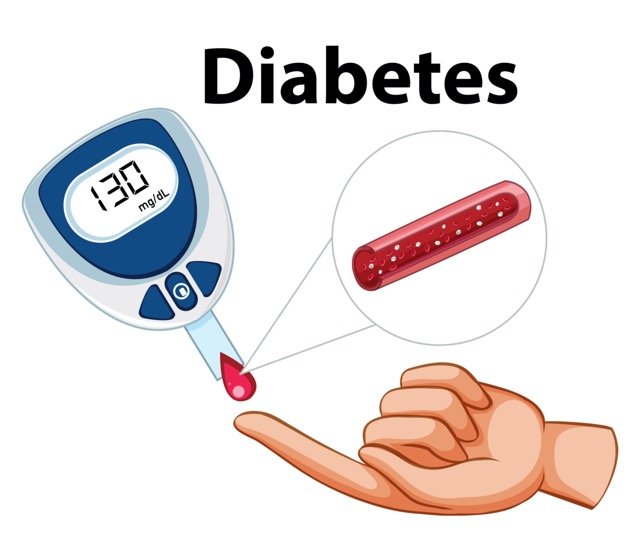Vestronidase alfa, marketed under the brand name Mepsevii, is a medication used for the treatment of mucopolysaccharidosis type VII (MPS VII), also known as Sly syndrome. This rare genetic disorder is characterized by the deficiency of the enzyme beta-glucuronidase, which is necessary for the breakdown of certain complex carbohydrates called glycosaminoglycans (GAGs). Without this enzyme, GAGs accumulate in cells and tissues throughout the body, leading to a range of symptoms including skeletal abnormalities, organ enlargement, developmental delay, and other systemic issues.
Vestronidase alfa is a recombinant form of human beta-glucuronidase, the enzyme that individuals with MPS VII lack. By replacing the missing enzyme, vestronidase alfa can help break down GAGs and alleviate the symptoms associated with MPS VII. It is administered through intravenous infusion.
Vestronidase alfa is a recombinant form of human beta-glucuronidase, which provides an exogenous glucuronidase enzyme for cellular lysosomal uptake.
It is indicated for the treatment of Mucopolysaccharidosis VII (MPS VII, Sly syndrome).
- Limitation in use due to: The effect of vestronidase alfa on the CNS manifestations of MPS VII has not been determined.
Vestronidase alfa Dose in Adults:
Note: Before starting the infusion of vestronidase alfa, it's recommended to take a type of allergy medication called nonsedating antihistamines. These medications help prevent allergic reactions. You can also take antipyretics, which are medicines that reduce fever, at the same time. It's best to take these medications 30 to 60 minutes before the infusion begins. This helps lower the chances of having any unwanted reactions to the treatment.
Vestronidase alfa Dose in the treatment of Mucopolysaccharidosis VII:
- In the treatment of Mucopolysaccharidosis VII, the recommended dose of vestronidase alfa is 4 milligrams per kilogram (mg/kg) given intravenously (through a vein) every two weeks. This dosage helps provide the necessary enzyme replacement therapy to manage the symptoms of the condition and improve the patient's quality of life.
Vestronidase alfa Dose in Children
Vestronidase alfa Dose in the treatment of Mucopolysaccharidosis VII (MPS VII, Sly syndrome):
Note:
Before starting the infusion of vestronidase alfa, it's recommended to take a type of allergy medication called nonsedating antihistamines. These medications help prevent allergic reactions. You can also take antipyretics, which are medicines that reduce fever, at the same time. It's best to take these medications 30 to 60 minutes before the infusion begins. This helps lower the chances of having any unwanted reactions to the treatment.
In Infants, Children, and Adolescents:
- The typical dosage of vestronidase alfa is 4 milligrams per kilogram (mg/kg) per dose, administered intravenously (IV), every two weeks.
- This regimen helps manage the symptoms associated with MPS VII by providing the enzyme replacement therapy needed for better health and functioning.
Pregnancy Risk Category: Not assigned
- Animal reproduction studies for vestronidase alfa did not report any adverse events.
- This means that during these studies, there were no negative effects observed on reproduction, pregnancy, or the development of the offspring in animals given the medication.
Vestronidase alfa use during breastfeeding:
- The presence of vestronidase alfa in breast milk is currently unknown.
- Therefore, it's essential for breastfeeding individuals to weigh the potential risks of infant exposure against the benefits of breastfeeding and the advantages of treatment for the mother.
- When making this decision, consulting with your’s doctor is crucial.
- They can provide personalized guidance based on the individual's specific circumstances, helping to ensure the best possible outcome for both mother and child.
Vestronidase alfa dose in renal disease:
- The manufacturer's labeling for vestronidase alfa does not include any dosage adjustments based on renal function.
- This is because the medication is not expected to be cleared from the body through the kidneys.
- Therefore, it is unlikely that adjustments based on renal function would be necessary.
Vestronidase alfa Dose in Liver Disease:
- The manufacturer's labeling for vestronidase alfa does not include any dosage adjustments based on hepatic (liver) function.
- This is because the medication is broken down by proteolytic enzymes that are not limited to hepatic tissue.
- As a result, it is unlikely that adjustments based on hepatic function would be necessary.
Common Side Effects of Vestronidase alfa (Beta glucuronidase) Include:
- Dermatologic:
- Skin rash
- Gastrointestinal:
- Diarrhoea
- Hypersensitivity:
- Anaphylaxis
- Immunologic:
- Antibody development
Less Common Side Effects of Vestronidase alfa (Beta glucuronidase) Include:
- Cardiovascular:
- Peripheral oedema
- Dermatologic:
- Pruritus
- Local:
- Swelling at the injection site
Frequency not defined:
- Miscellaneous:
- Febrile seizures
Contraindication to Vestronidase alfa (B-glucoronidase) Include:
- According to the manufacturer's labeling, there are no contraindications listed for the use of vestronidase alfa.
Warnings and Precautions
Extravasation:
- Extravasation, or the leakage of medication from the infusion site into surrounding tissues, has been reported with the use of vestronidase alfa.
- This can lead to swelling at the infusion site.
Hypersensitivity/ anaphylactoid reactions - [US Boxed Warning]
- Vestronidase alfa can sometimes cause hypersensitivity reactions or anaphylaxis, which is a severe allergic reaction.
- This could happen even with the first dose, so it's essential to have medical support nearby when giving the medication.
- Symptoms of anaphylaxis may include trouble breathing, bluish skin, low oxygen levels, and low blood pressure.
- Patients should be closely watched during and for an hour after the infusion.
- If anaphylaxis occurs, stop the infusion right away.
Monitor:
Monitor for Reactions:
- Keep an eye out for any unusual reactions during the infusion.
- Watch for signs of hypersensitivity or allergic reactions.
Monitor Infusion Site:
- Check the infusion site regularly for any swelling, redness, or discomfort.
- If you notice any problems at the infusion site, let your doctor know right away.
How to administer Vestronidase alfa?
Infusion Instructions:
- Duration: Administer the infusion intravenously (IV) over approximately 4 hours.
- Initial Rate: Infuse the first 2.5% of the total volume over the first hour, taking into account any dead space in the IV line.
- Rate Adjustment: After the first hour, increase the infusion rate gradually (as tolerated) to complete the infusion over the next 3 hours.
- Filter: Use an infusion set with an in-line low protein-binding 0.2-micron filter.
- Prevent Bolus: Do not flush the line to avoid a rapid bolus of infused enzyme.
- Prevent Clotting: Due to the low infusion rate, additional normal saline (NS) may be added through a separate line (piggyback or Y tube) to maintain sufficient IV flow and prevent clotting or line blockage.
- Single Line Use: Do not infuse other products in the same IV line to avoid potential interactions.
- Discontinuation: If a severe reaction, including anaphylaxis, occurs, discontinue the infusion immediately.
- Patient Observation: Observe the patient during the infusion and for 60 minutes following the completion of the infusion.
Additional Considerations:
- Irritant Potential: Ensure proper needle or catheter placement before and during the IV infusion to minimize irritation.
- Extravasation Risk: Take precautions to avoid extravasation (leakage of medication into surrounding tissues) during administration.
Mechanism of action of Vestronidase alfa:
- Vestronidase alfa is a type of medication made from human beta-glucuronidase (GUS).
- This enzyme is produced using genetic engineering techniques.
- When given to patients, vestronidase alfa provides extra GUS enzyme, which is important for cells to break down certain substances called glycosaminoglycans (GAGs).
- These GAGs can build up in the body's tissues in conditions like mucopolysaccharidosis VII (MPS VII or Sly syndrome).
- The enzyme has special tags called mannose-6-phosphate (M6P) residues attached to it.
- These tags help the enzyme attach to receptors on the surface of cells.
- Once attached, the enzyme is taken up by the cells and directed to the lysosomes, which are compartments in the cells responsible for breaking down substances.
- Inside the lysosomes, the enzyme helps break down the accumulated GAGs, which can help improve symptoms in affected tissues.
Distribution:
- Volume of Distribution (V): Approximately 260 ± 130 milliliters per kilogram (mL/kg), with a range of 97 to 598 mL/kg. This parameter indicates the extent to which the medication spreads throughout the body after administration.
Metabolism:
- Vestronidase alfa undergoes proteolytic degradation, breaking down into smaller peptides and amino acids. This process occurs as the body metabolizes and processes the medication.
Elimination:
- Half-life: The half-life of elimination for vestronidase alfa is approximately 155 ± 37 minutes, with a range of 51 to 213 minutes. This refers to the time it takes for half of the medication to be removed from the bloodstream.
International Brands of Vestronidase alfa:
- Mepsevii
Vestronidase alfa Brands in Pakistan:
No Brands Available in Pakistan.







